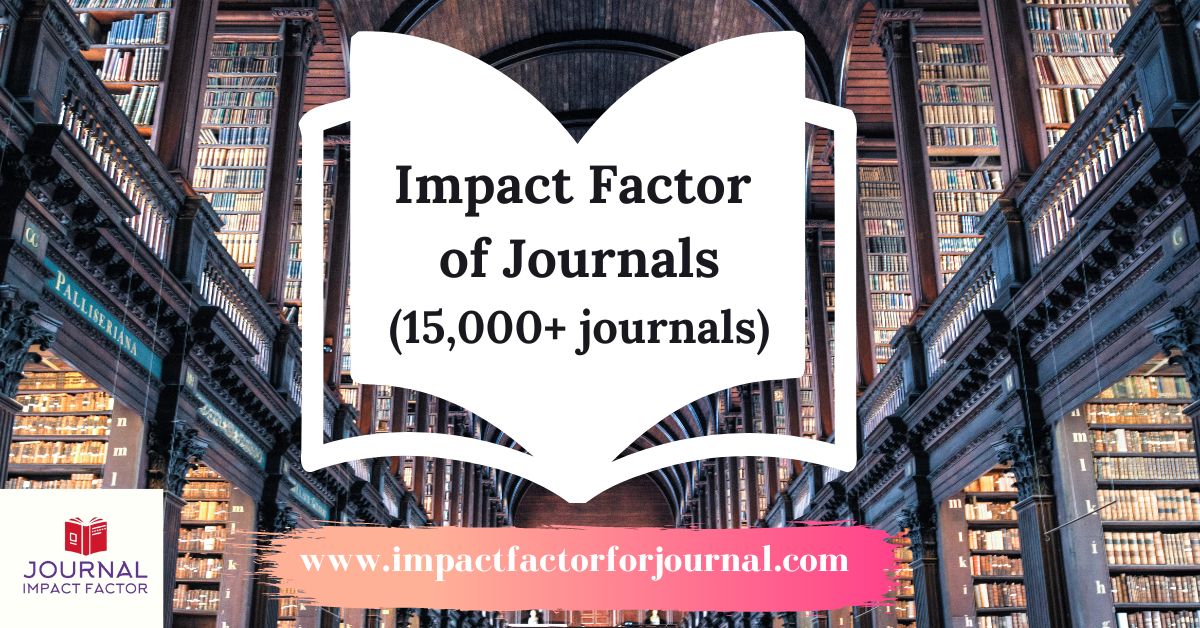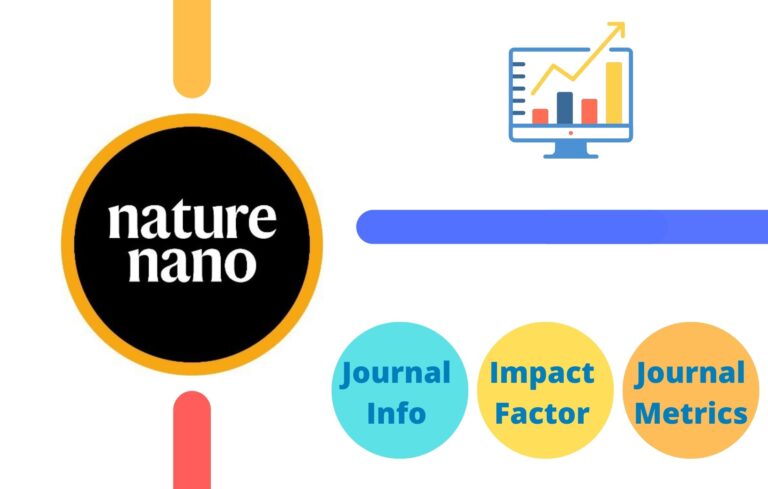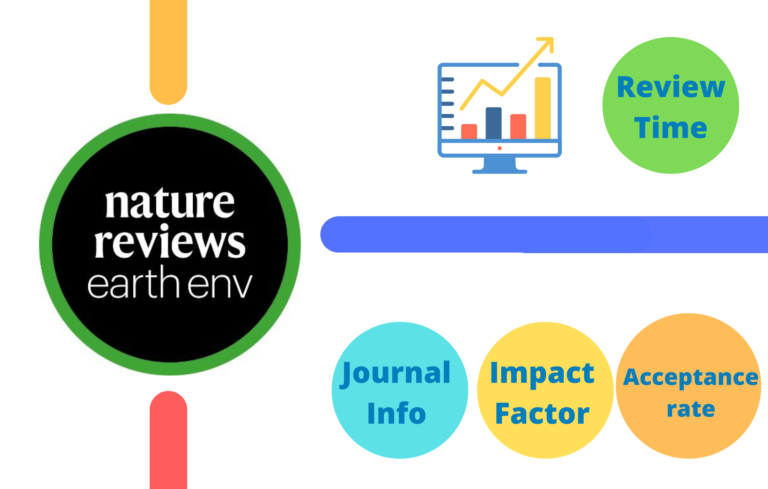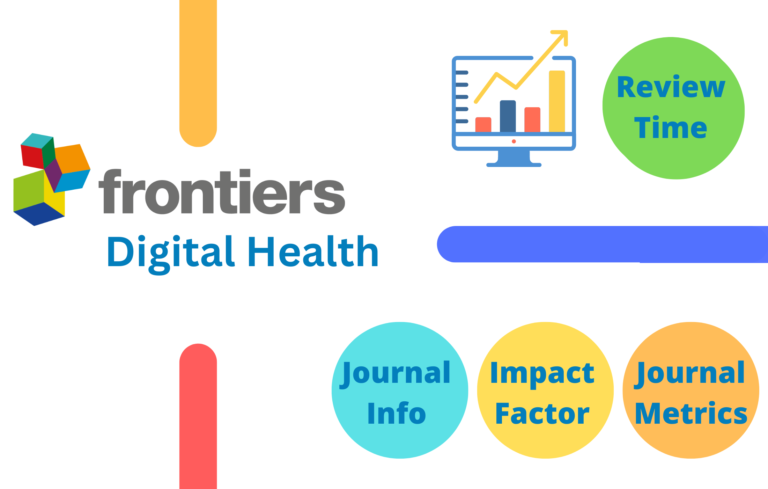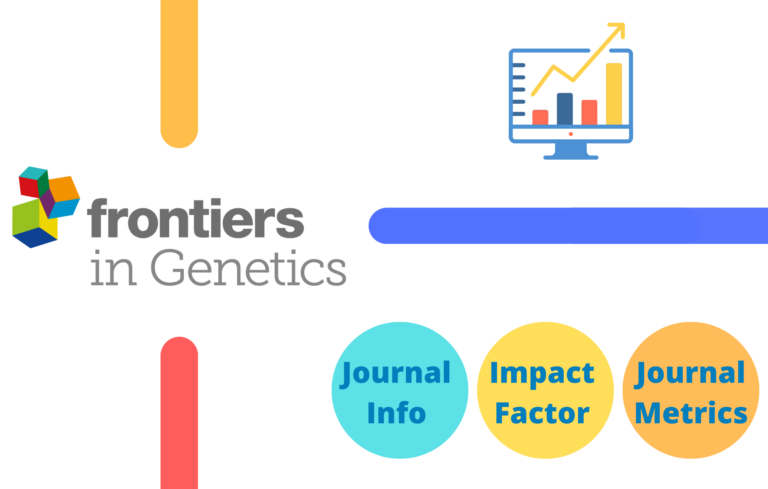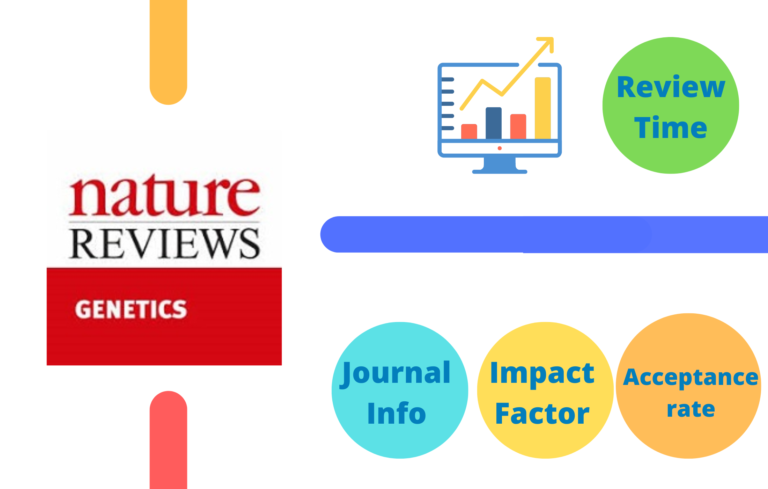Impact Factor or Journal Impact Factor (JIF) is a metric used to evaluate the relative importance of a journal within its field. It was first introduced in the 1960s by Eugene Garfield.

He also founded the Institute for Scientific Information (ISI), Science Citation Index (SCI), and the Social Sciences Citation Index (SSCI), which are widely used in the academic community to track the impact of scholarly research.
Impact Factor is published annually by Clarivate Analytics in the Journal Citation Reports (JCR) database.
How to calculate Impact Factor
The impact factor is calculated by dividing the number of citations received by a journal in a given year to the number of articles published in that journal in the previous two years.
The formula for calculating the impact factor is:
Impact Factor = (Citations in Year Y) / (Number of articles published in Years X and Y-1)
For example, if a journal had 100 citations in year Y and published 50 articles in years X and Y-1, the impact factor for that year would be 2.0 (100/50).
It is important to note that the impact factor is calculated annually, and it is based on the number of citations received in the current year, divided by the number of articles published in the journal in the previous two years.
How to find Impact Factor
There are several ways to find the impact factor of a journal:
- Journal Citation Reports (JCR) – Subscription Required: To find the JIF of a specific journal, you can search for the journal title on the JCR website, or you can use the JCR search function to filter journals by subject category, publisher, or other criteria. JCR is a database provided by Clarivate Analytics that allows users to search for journals by title and subject area, and it provides the impact factor for each journal, as well as other metrics such as the Eigenfactor and the Citescore.
- Web of Science – Subscription Required: This is another database provided by Clarivate Analytics that allows users to search for journals and articles, and it provides the impact factor for the journals.

3. Finding Impact Factor from JCR Reports available online : Each JCR report provides detailed information on a specific journal, including:

- Journal Impact Factor (JIF)
- Eigenfactor: This metric is based on the number of times articles from a journal are cited in other journals, and also takes into account the prestige of the journals doing the citing.
- 5-Year Impact Factor: This metric is similar to the JIF, but it is based on citations over a five-year period.
- Article Influence: This metric is a measure of the average influence of articles published in a journal, based on the Eigenfactor score.
- Cited by Count: This metric shows the number of articles that have been cited articles published in the journal.
The JCR report also provides information on the journal’s publisher, ISSN, subject category, and other bibliographic data.
Processed JCR reports are widely available online in the form of PDF, Excel files, and Word documents. A few of them are mentioned below
JCR 2021 – Published in June 2022
JCR 2020 – Published in June 2021
JCR 2019 – Published in June 2020
You can search the impact factor of journals from these JCR reports on the above page using the Ctrl+F option. You can also download the PDF and Excel files available for personal use.
Limitations of Impact Factor
There are several limitations of the impact factor as a measure of journal quality:
- Time lag: The impact factor is based on citations received in a given year, but it does not take into account the time lag between when an article is published and when it is cited. This means that articles that are published early in the year may not be included in the calculation of the impact factor, even if they eventually receive a high number of citations.
- Self-citation bias: The impact factor counts all citations, including self-citations, which can artificially inflate the impact factor of a journal.
- Disciplinary bias: The impact factor is calculated based on the number of articles published in a journal and the number of citations received, but different fields have different citation patterns. For example, journals in the natural sciences tend to have higher impact factors than journals in the social sciences or humanities, even though this does not necessarily reflect the importance of the research in these fields.
- Does not take into account the diversity of content: The impact factor does not take into account the diversity of content within a journal. It does not differentiate between papers, review papers, letters, etc.
- Does not account for the alternative metrics: The impact factor is a citation-based metric, but it does not account for other types of impact, such as social media shares, downloads, views, etc. Alternative metrics like Altmetrics are used to measure the impact of a paper in a more comprehensive way.
Due to these limitations, it is important to use the impact factor in conjunction with other metrics and to consider the specific context and characteristics of a journal or research field when evaluating its quality.
Alternative to Impact Factor
Although Impact Factor is one of the widely used journal metrics, it has several limitations and there are alternative metrics that have been developed to address these limitations. Some examples include:
- CiteScore: This is a metric provided by Elsevier that takes into account the number of citations received by a journal over a three-year period, as well as the number of documents published in the journal over the same period.
- SNIP (Source Normalized Impact per Paper): This metric is provided by CWTS Leiden Ranking, it aims to correct for differences in citation practices between fields and takes into account the number of citations received by a journal, as well as the number of documents published in the journal, and the number of citations received by the documents in the same subject area.
- Eigenfactor: This metric is provided by Eigenfactor, it uses a complex algorithm that takes into account the number of citations received by a journal, as well as the number of citations received by the documents that cite the journal.
- h-index: This is a metric that measures the productivity and impact of a researcher or a journal by taking into account the number of papers that have been cited at least h times.
- Altmetrics: This is a set of metrics that aim to measure the impact and influence of scholarly articles in ways that go beyond traditional citation counts. They include metrics such as social media mentions, blog posts, and news articles that mention an article.
Alternative to JCR
Several alternatives to the JCR are used to evaluate the impact and influence of scholarly journals. Some examples include:
- Scopus Journal Metrics: This is a tool provided by Elsevier that allows users to access journal metrics, including the CiteScore, SNIP, and IPP.
- Web of Science Journal Impact Factor: This is a tool provided by Clarivate Analytics that allows users to access journal impact factors, including the Journal Impact Factor, Immediacy Index, and Eigenfactor.
- Google Scholar Metrics: This is a tool provided by Google that allows users to access journal metrics, including the h-index and i10-index.
- Directory of Open Access Journals (DOAJ): This is a directory of open-access journals that are peer-reviewed and indexed by various databases such as Scopus, PubMed, and JCR.
- Publons: This is a platform for researchers to track, verify, and showcase their peer review and editorial contributions.
It’s worth noting that each of these tools have their own strengths and weaknesses, and it’s important to evaluate the metrics provided by different sources before making any conclusions about the quality or impact of a journal.
List of Journals with the highest Impact Factor
| Sl. No. | Journal name | 2022 JIF |
| 1 | CA-A CANCER JOURNAL FOR CLINICIANS | 254.7 |
| 2 | LANCET | 168.9 |
| 3 | NEW ENGLAND JOURNAL OF MEDICINE | 158.5 |
| 4 | JAMA-JOURNAL OF THE AMERICAN MEDICAL ASSOCIATION | 120.7 |
| 5 | NATURE REVIEWS DRUG DISCOVERY | 120.1 |
| 6 | NATURE REVIEWS MOLECULAR CELL BIOLOGY | 112.7 |
| 7 | BMJ-British Medical Journal | 105.7 |
| 8 | NATURE REVIEWS IMMUNOLOGY | 100.3 |
| 9 | NATURE REVIEWS MICROBIOLOGY | 88.1 |
| 10 | Nature Reviews Materials | 83.5 |
| 11 | NATURE MEDICINE | 82.9 |
| 12 | Nature Reviews Disease Primers | 81.5 |
| 13 | Nature Reviews Clinical Oncology | 78.8 |
| 14 | NATURE REVIEWS CANCER | 78.5 |
| 15 | Lancet Respiratory Medicine | 76.2 |
| 16 | World Psychiatry | 73.3 |
| 17 | Nature Reviews Gastroenterology & Hepatology | 65.1 |
| 18 | NATURE | 64.8 |
| 19 | CELL | 64.5 |
| 20 | Lancet Psychiatry | 64.3 |
| 21 | CHEMICAL REVIEWS | 62.1 |
| 22 | SCIENCE | 56.9 |
| 23 | Nature Energy | 56.7 |
| 24 | LANCET INFECTIOUS DISEASES | 56.3 |
| 25 | LANCET ONCOLOGY | 51.1 |
| 26 | ANNALS OF ONCOLOGY | 50.5 |
| 27 | CANCER CELL | 50.3 |
| 28 | Lancet Public Health | 50 |
| 29 | Nature Reviews Cardiology | 49.6 |
| 30 | LANCET NEUROLOGY | 48 |
| 31 | NATURE METHODS | 48 |
| 32 | NATURE BIOTECHNOLOGY | 46.9 |
| 33 | CHEMICAL SOCIETY REVIEWS | 46.2 |
| 34 | JOURNAL OF CLINICAL ONCOLOGY | 45.3 |
| 35 | Lancet Diabetes & Endocrinology | 44.5 |
| 36 | CELL RESEARCH | 44.1 |
| 37 | REVIEWS OF MODERN PHYSICS | 44.1 |
| 38 | NATURE REVIEWS GENETICS | 42.7 |
| 39 | Nature Reviews Earth & Environment | 42.1 |
| 40 | Nature Reviews Nephrology | 41.5 |
| 41 | NATURE MATERIALS | 41.2 |
| 42 | Living Reviews in Relativity | 40.6 |
| 43 | Nature Reviews Endocrinology | 40.5 |
| 44 | Joule | 39.8 |
| 45 | EUROPEAN HEART JOURNAL | 39.3 |
| 46 | Signal Transduction and Targeted Therapy | 39.3 |
| 47 | ANNALS OF INTERNAL MEDICINE | 39.2 |
| 48 | JAMA Internal Medicine | 39 |
| 49 | INTENSIVE CARE MEDICINE | 38.9 |
| 50 | Nature Reviews Physics | 38.5 |
| 51 | Nature Nanotechnology | 38.3 |
| 52 | Lancet Microbe | 38.2 |
| 53 | Nature Reviews Neurology | 38.1 |
| 54 | CIRCULATION | 37.8 |
| 55 | Nature Catalysis | 37.8 |
| 56 | PROGRESS IN MATERIALS SCIENCE | 37.4 |
| 57 | Molecular Cancer | 37.3 |
| 58 | CLINICAL MICROBIOLOGY REVIEWS | 36.8 |
| 59 | Lancet Child & Adolescent Health | 36.4 |
| 60 | Nature Reviews Chemistry | 36.3 |
| 61 | Annual Review of Pathology-Mechanisms of Disease | 36.2 |
| 62 | Lancet Gastroenterology & Hepatology | 35.7 |
| 63 | IEEE Communications Surveys and Tutorials | 35.6 |
| 64 | Nature Photonics | 35 |
| 65 | NATURE REVIEWS NEUROSCIENCE | 34.7 |
| 66 | Lancet Global Health | 34.3 |
| 67 | Nature Electronics | 34.3 |
| 68 | MMWR-MORBIDITY AND MORTALITY WEEKLY REPORT | 33.9 |
| 69 | MMWR Recommendations and Reports | 33.7 |
| 70 | Nature Reviews Rheumatology | 33.7 |
| 71 | PHYSIOLOGICAL REVIEWS | 33.6 |
| 72 | Cell Discovery | 33.5 |
| 73 | Annual Review of Astronomy and Astrophysics | 33.3 |
| 74 | Energy & Environmental Science | 32.5 |
| 75 | Immunity | 32.4 |
| 76 | Electrochemical Energy Reviews | 31.3 |
| 77 | MATERIALS SCIENCE & ENGINEERING R-REPORTS | 31 |
| 78 | Lancet Digital Health | 30.8 |
| 79 | NATURE GENETICS | 30.8 |
| 80 | Nature Climate Change | 30.7 |
| 81 | NATURE IMMUNOLOGY | 30.5 |
| 82 | Cell Host & Microbe | 30.3 |
| 83 | PHYSICS REPORTS-REVIEW SECTION OF PHYSICS LETTERS | 30 |
| 84 | Nature Human Behaviour | 29.9 |
| 85 | Annual Review of Immunology | 29.7 |
| 86 | PROGRESS IN ENERGY AND COMBUSTION SCIENCE | 29.5 |
| 87 | ADVANCED MATERIALS | 29.4 |
| 88 | Gastroenterology | 29.4 |
| 89 | BEHAVIORAL AND BRAIN SCIENCES | 29.3 |
| 90 | Cell Metabolism | 29 |
| 91 | JAMA Neurology | 29 |
| 92 | Journal of Hematology & Oncology | 28.5 |
| 93 | JAMA Oncology | 28.4 |
| 94 | Nature Microbiology | 28.3 |
| 95 | Cancer Discovery | 28.2 |
| 96 | JOURNAL OF INFECTION | 28.2 |
| 97 | Nature Biomedical Engineering | 28.1 |
| 98 | Advanced Energy Materials | 27.8 |
| 99 | Annual Review of Fluid Mechanics | 27.7 |
| 100 | Nature Sustainability | 27.6 |
Click here to download the above list of highest impact factor journals
